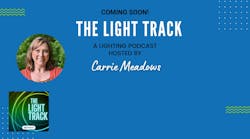With so many people living and working around the clock indoors under electric light, there have been many studies on the impact of light from both a photobiological safety and a wellbeing standpoint. No doubt, lighting that first does no harm and then is designed to positively impact the human condition has been a hot topic. While we’re not talking about circadian application here or a method of evaluating the circadian impact of light, note that we have an excellent Industry Insights piece coming to you in our June issue on a topic concerning that.
A less-scientific term often used of late to describe the desirable characteristics of light is “natural.” It came up at the recent Strategies in Light conference, as you can read in chief editor Maury Wright’s post-event report. And various companies such as Seoul Semiconductor, LEDvance, Nichia, and Bridgelux itself have touted LEDs and SSL end products that are engineered to output light with a spectral power distribution (SPD) closely matching daylight. But is that the end of the definition?
I write this because earlier today Maury reported on a proposed metric developed by LED and module technology provider Bridgelux, which utilizes as its approach a percentage called Average Spectral Difference (ASD). The Reader’s Digest version is that Bridgelux has based the method on comparing SPD of an LED with that of a reference illuminant that is meant to represent natural light. You can get the far more detailed picture from Maury’s news story.
So is “natural” just another marketing buzzword? How would you characterize “natural light” in terms of electric lighting in the built environment (without using the word “natural” to describe it, a true challenge)? And what do you think about the proposed ASD metric? E-mail us your thoughts, challenges, questions — or hit us up on the social below channels below.
For up-to-the-minute LED and SSL updates, why not follow us on Twitter? You’ll find curated content and commentary, as well as information on industry events, webcasts, and surveys on our LinkedIn Company Page and our Facebook page.







